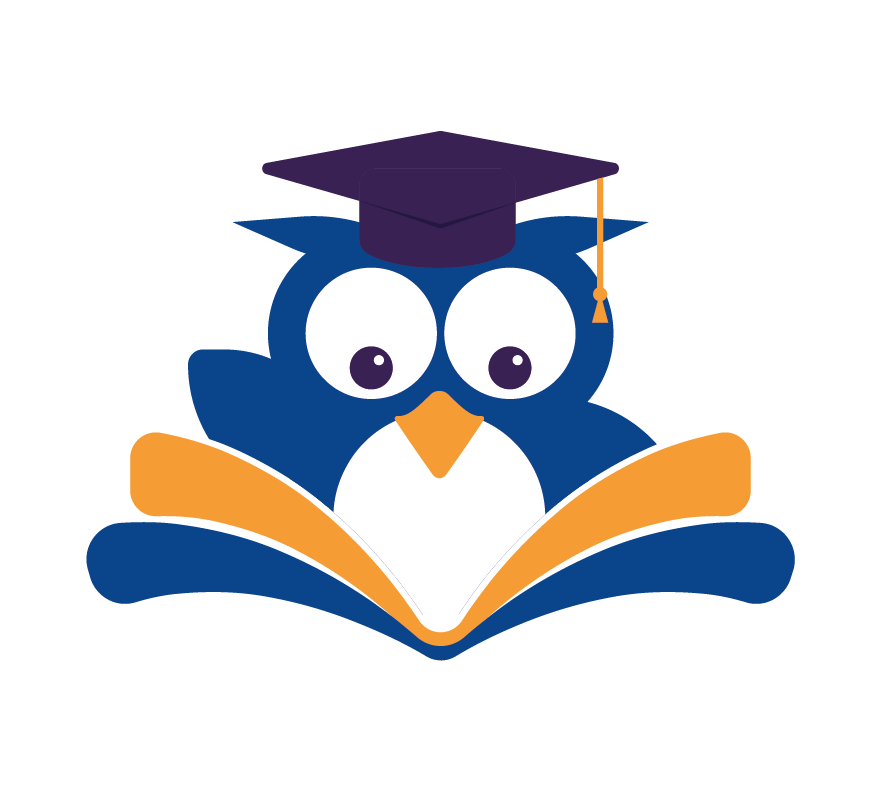In today’s fast world, embracing lifelong learning is not just good; it’s essential. We live in a time where keeping up with education is vital. With 94% of millennials eager to improve themselves, spending nearly $300 a month on self-growth shows their commitment.
So, how do you unlock your potential? By adopting a learning mindset, you open doors to endless possibilities. It’s about making learning a fun and essential part of your life.
Imagine tackling tough challenges with confidence or learning new skills quickly. That’s what it means to be addicted to learning. It’s not just about school; it’s about keeping a curiosity that pushes you to learn and grow every day.
Key Takeaways
- Embracing lifelong learning is crucial for personal and professional growth.
- Adopting a learning mindset can transform your life and career.
- Continuous education is key to staying competitive.
- Cultivating curiosity is essential for effective learning.
- Learning should be an enjoyable and integral part of your life.
The Power of Learning Addiction
Being ‘addicted’ to learning might seem odd, but it’s a great way to grow. It means you always want to learn more and get better at new things.
What Does It Mean to Be Addicted to Learning?
Being addicted to learning is more than just gathering facts. It’s about being ready for challenges and seeing failures as chances to learn. This mindset is key in today’s fast world.
The Science Behind Learning and Brain Plasticity
Studies show learning makes new paths in our brain, boosting our thinking and mental health. This is called brain plasticity. It lets us learn and change as we go through life.
How Learning Creates New Neural Pathways
Learning something new makes new connections in our brain. The more we use this new knowledge, the stronger these connections get. This helps us remember better, solve problems, and think creatively.
Knowing how learning changes our brain helps us use learning addiction to better our lives. It keeps us ready for whatever comes next.
Why Becoming Addicted to Learning Changes Everything
Becoming addicted to learning changes your life in big ways. It’s not just about getting new knowledge. It opens doors to new chances and experiences.
Personal Growth and Self-Actualization
Learning addiction helps you grow personally. It pushes you to try new things and face challenges. This helps you reach your full potential and become the best you.
Career Advancement and Adaptability
A learning mindset is key for career growth. It helps you adapt to industry changes, keeping you ahead. Employers look for people who keep learning, making you more likely to get promotions and new jobs.
Cognitive Benefits and Mental Health
Learning keeps your mind sharp and boosts mental health. It builds cognitive reserve, lowering the risk of brain decline.
Learning as a Defense Against Cognitive Decline
Learning for life can protect your brain from aging. Research shows that those who keep learning new things are less likely to get dementia or other brain problems.
| Benefits | Description |
|---|---|
| Personal Growth | Leads to self-actualization and realizing your full potential |
| Career Advancement | Enhances adaptability and makes you more attractive to employers |
| Cognitive Benefits | Improves cognitive function and reduces the risk of cognitive decline |
Identifying Your Learning Style and Preferences
Ever thought about how you learn best? Knowing your learning style can really help you learn better.
Visual, Auditory, Reading/Writing, and Kinesthetic Learners
Studies show that people learn in different ways. Some are visual learners, using images and videos. Others are auditory learners, preferring sounds. Then there are reading/writing learners and kinesthetic learners, who like hands-on activities.
Finding Your Optimal Learning Environment
Your learning environment is key to focus and learning. Some like quiet, clean spaces. Others do better in lively areas. Try different places to see what works for you.
Assessment Tools to Discover Your Learning Style
Many tools can help find your learning style. They’re usually quizzes or questionnaires about your learning habits.
How to Adapt Learning Materials to Your Style
After figuring out your learning style, adjust your study materials. For example, visual learners might like diagrams and charts. Auditory learners might prefer listening to podcasts.
Creating Your Personal Learning Ecosystem
Building a personal learning ecosystem is like setting up a special workshop for your brain. It’s where every tool is chosen to help you learn better. Your learning ecosystem includes digital tools, physical spaces, and schedules that help you learn.
Digital Tools and Resources
Digital tools are key in today’s learning world. Apps like Evernote and Trello help you organize your study stuff and keep track of your progress. Online platforms like Coursera and Udemy have lots of courses on different subjects. You can also use browser extensions like Grammarly to get better at writing.
Physical Spaces for Optimal Learning
Your physical learning space is just as important as your digital tools. Create a dedicated study space that’s quiet, comfy, and free from distractions. Use ergonomic furniture and good lighting to make your study sessions better.
Building a Learning Schedule That Works
Having a good learning schedule is key for steady progress. Here’s a simple table to help plan your day:
| Time | Activity | Duration |
|---|---|---|
| 8:00 AM | Language Learning | 30 minutes |
| 12:00 PM | Lunch Break | 60 minutes |
| 2:00 PM | Project Work | 90 minutes |
Time-Blocking Techniques for Consistent Learning
Time-blocking is a great way to manage your study time. By setting aside specific times for different subjects or tasks, you can stay focused and avoid burnout. For instance, you might use 8:00-9:00 AM for language learning and 2:00-3:30 PM for project work.

How to Become Addicted to Learning: Step-by-Step Process
Becoming addicted to learning starts with finding what sparks your curiosity. Follow a structured process to develop a lifelong love for learning.
Start with Topics You’re Passionate About
Focus on topics that genuinely interest you. When you’re passionate, you dive deeper and stay motivated.
Set Meaningful Learning Goals
Clear and meaningful learning goals are key. Define what you want to achieve and map out your learning journey.
SMART Goals vs. Stretch Goals for Learning
There are two ways to set learning goals: SMART and stretch goals. SMART goals are clear and achievable. Stretch goals push you to grow beyond your limits.
- SMART goals are Specific, Measurable, Achievable, Relevant, and Time-bound.
- Stretch goals are ambitious, encouraging you to reach beyond your limits.
Implement the 5-Minute Rule to Overcome Resistance
The biggest barrier to learning is initial resistance. The 5-minute rule helps: start with just 5 minutes of work on your goal.
Track Your Progress and Celebrate Small Wins
Tracking progress and celebrating small wins keeps you motivated. It reinforces positive habits and encourages continued learning.
| Learning Goal | Tracking Method | Celebration Metric |
|---|---|---|
| Learn a new language | Daily practice log | Completing a week’s worth of lessons |
| Master a new skill | Weekly progress report | Achieving a milestone in skill development |
| Read more books | Reading log | Finishing a challenging book |
By following these steps and staying consistent, you can become addicted to learning and reach your full potential.
Developing a Growth Mindset for Continuous Learning
Having a growth mindset is key for ongoing learning and growth. Studies by Carol Dweck reveal that those with a growth mindset do better than those with a fixed mindset. They face challenges head-on, keep trying when things get tough, and believe that effort leads to mastery.
Embracing Challenges and Failures
Seeing challenges as chances to grow is vital for a growth mindset. When you see challenges as growth opportunities, you’re more likely to take on new tasks. Even when things get hard, you keep going. As Nelson Mandela said, “The greatest glory in living lies not in never falling, but in rising every time we fall.”
Cultivating Curiosity and Wonder
Keeping a sense of wonder and being open to new things is what curiosity is all about. Ask questions, look for new knowledge, and explore different views. This keeps you interested and motivated to learn.
Replacing Fixed Thinking with Growth-Oriented Language
The words you use can change your mindset. Switching to growth-oriented language can make you more positive and resilient in learning. For instance, say “I’m not good at this yet” instead of “I’m not good at this.”
Practical Mindset Exercises for Learners
Here are some ways to apply these ideas:
- Think about a recent challenge you faced. How did you handle it? What did you learn?
- Use growth-oriented language in your everyday talks.
- Do things that make you curious and encourage you to learn more.

Practical Strategies to Make Learning a Daily Habit
Making learning a daily habit can be tough, but it’s doable with the right strategies. To make learning part of your daily routine, you need to use techniques that help it stick.
The Habit Stacking Method
One great way to make learning a habit is by using the habit stacking method. This method stacks a new habit (like learning) onto an existing one (like brushing your teeth). For example, you could listen to a podcast or audiobook while you’re commuting or doing chores.
Creating Effective Learning Triggers
Learning triggers are cues that remind you to learn. These can be simple, like setting a daily reminder on your phone or having a specific learning spot. The goal is to link the trigger to the act of learning.
Using Spaced Repetition for Knowledge Retention
Spaced repetition is a great way to keep knowledge in your memory. It involves reviewing material at longer intervals to help it stick in your long-term memory. This method works well for learning new words, historical dates, or complex ideas.
Tools and Apps for Spaced Repetition
| Tool/App | Description |
|---|---|
| Anki | A popular flashcard app that uses spaced repetition |
| Quizlet | An online learning tool that offers flashcards and games |
| Duolingo | A language learning app that incorporates spaced repetition |
Implementing the 20-Hour Rule for New Skills
The 20-hour rule says you can learn a new skill in just 20 hours of practice. It won’t make you an expert, but it’s a good start. To follow this rule, pick a skill you want to learn, break it down, and set aside time each day to practice.
Leveraging Technology for Lifelong Learning
Using technology is key for ongoing education. It’s easier than ever to find learning resources online. You can find everything from online courses to educational podcasts.
Online Courses and Learning Platforms
Online courses have changed how we learn. They offer flexibility and are easy to access. Sites like Coursera, edX, and Udemy have many courses. They let you learn new things or get better at specific subjects.
Educational Apps and Browser Extensions
Apps and browser extensions also help with learning. Apps like Duolingo for languages or Khan Academy for many subjects make learning fun. Browser extensions like Grammarly improve writing skills. They show how tech supports learning in many ways.
Podcasts, Audiobooks, and Digital Content
Podcasts and audiobooks are getting more popular. They turn idle time into learning chances. You can learn while commuting or exercising. Audible and Spotify have lots of audiobooks and podcasts on different topics.
Turning Downtime into Learning Time
Digital content is great because it turns idle time into learning chances. With podcasts and audiobooks, you can learn during your daily routines. This includes while commuting or doing chores.
| Learning Resource | Description | Benefits |
|---|---|---|
| Online Courses | Coursera, edX, Udemy | Flexibility, Accessibility, Variety |
| Educational Apps | Duolingo, Khan Academy | Engagement, Personalization |
| Podcasts/Audiobooks | Audible, Spotify | Convenience, Accessibility |
Social Learning: Building Communities and Networks
Social learning is a powerful tool that can make learning better. By connecting with others who have similar interests, you learn more. You stay motivated and understand things better.
Finding Learning Partners and Accountability Buddies
Having a learning partner or buddy can really help. You can help each other, share tips, and talk about tough topics. Learning together makes it more fun and keeps you focused.
Joining Communities of Practice
Communities of practice are groups of people who share a common interest. They learn together by talking and working together often. Being part of these groups gives you access to great resources, mentors, and chances to meet new people.
Teaching Others as a Learning Accelerator
Teaching what you know helps you learn more. It also shows you what you still need to work on. This way, you can improve your understanding and keep it in your memory.
Starting a Learning Circle or Study Group
Think about starting a learning circle or study group. You can do this online or in person, depending on what you like. It’s a great way to apply these ideas.
| Benefits of Social Learning | Individual Learning | Social Learning |
|---|---|---|
| Motivation | Often solitary, can be demotivating | Enhanced by community support |
| Resource Sharing | Limited to individual resources | Access to a collective pool of resources |
| Understanding and Retention | Can be challenging to grasp complex topics alone | Improved through discussion and teaching others |
By using social learning, you can make learning more fun, effective, and rewarding.
Overcoming Learning Plateaus and Obstacles
Every learner hits obstacles at some point. The key is knowing how to get past them. You might face information overload, procrastination, and dwindling motivation as you learn. It’s important to tackle these to keep moving forward.
Dealing with Information Overload
In today’s world, we’re hit with a lot of info. To not feel swamped, it’s key to curate quality resources. Stick to trusted sources and ignore the rest.
Curating Quality Resources
To curate well, choose sources known for their reliability, like academic journals or top websites. Use tools like RSS feeds or content aggregators to manage your info better.
Managing Procrastination and Distractions
Procrastination and distractions can mess up your learning plans. To fight this, make a good learning space and try the Pomodoro Technique to stay on track.
Strategies for When Motivation Wanes
Motivation can go up and down. To get your spark back, check your goals and celebrate your small wins.
Balancing Depth vs. Breadth in Learning
It’s important to find a balance between diving deep into a subject and exploring many topics. Think about your goals to figure out the best way to learn for you.
Conclusion: Embracing the Lifelong Learning Journey
As we wrap up our look at becoming addicted to learning, we see it’s a never-ending path. Embracing lifelong learning keeps us adaptable, curious, and open to new things.
By adopting a learning mindset, we can change our lives. We grow personally, advance in our careers, and improve our minds. In today’s fast world, continuous learning is key. It helps us stay relevant and succeed.
Your learning journey is special, and it’s key to celebrate your small wins. Keep moving forward, knowing each step shows your dedication and hard work. We urge you to keep exploring, learning, and stepping out of your comfort zone.
The perks of a lifelong learning mindset are clear. Making learning a habit boosts your knowledge and leads to a more rewarding life. So, take action today and join us on this ongoing journey!

